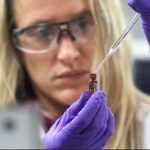Clinical evaluation is defined as the assessment and analysis of clinical data pertaining to a medical device in order to verify its clinical safety and performance when used as intended.
To achieve this, however, it’s not enough to follow definitions; you need to have a thorough understanding of the regulations they stem from and the various revisions that indicate the aspects that require reform or command most attention.
View the MedTech Intelligence 2019 series of EU MDR/IVDR conferencesThe ins and outs of CER development and the steps taken by the responsible manufacturer to successfully provide a compliant CER, based on a comprehensive clinical evaluation strategy, is often unclear to professionals who are not CER specialists.
A lack of proficient CER experience can lead to various interpretations of the CER guidelines, which can result in varying approaches to the CER process. Also, with the evolving CER requirements, it is becoming more challenging for medical device manufacturers to be confident in their CER approach. Presenting adequately supported CERs, especially for less well-established medical devices that lack a significant history of safety and performance, is becoming immensely difficult. The consequences for failing to obtain CE Mark, pass an audit or an inspection could be dire for some businesses, affecting not only their ability to manufacture and sell their products, but also their business reputation, which can have more severe long-term implications.
On the other hand, manufacturers that have understood the importance of carrying out an efficient management of the CER process are reaping benefits that go way beyond merely being able to keep products on the market and avoid recalls. An efficient CER process can in fact improve postmarket surveillance (PMS), justify product portfolio, shorten time to market for new devices and help speed-up and make improvements to new product design at the R&D stage as well as help manage claims. In addition to this, CERs have taken on increasing importance as they are emphasised by the new EU Medical Device Regulation (MDR).
This increasing emphasis is rooted in regulatory history. In 2002, the Medical Devices Experts Group published a report highlighting concerns relating to conformity assessment. Specifically, it was felt that manufacturers did not always have clinical data available, notified bodies (NBs) did not sufficiently verify the adequacy of the clinical data provided with respect to characteristics and performances of the device, and that the wording of the Medical Device Directive (MDD) was ambiguous.
To address this ambiguity the MEDDEV 2.7/1 “Clinical Evaluation: A Guide for Manufacturers and Notified Bodies” was published in 2003 and shortly followed by the amendment to the Medical Device Directive (93/42/EEC) in 2007 (2007/47/EC), which added further requirements. Now the new MDR, which came into effect on May 25, 2017, strongly emphasises the requirements for supporting clinical data and shines a spotlight on the planning of CERs and on the need for a clearly documented process.
NBs too are under increased pressure to improve their performance in terms of safeguarding public safety and are required to increase use of unannounced inspections and limit their activities to devices in which they have proven competence. The intention to improve safety through a two-pronged approach is therefore clear.
One key challenge faced by the industry is the misconception among manufacturers that clinical evaluations are a one-off task. Instead, it’s a routine activity that requires regular updating and refreshing. A second typical challenge is caused by the frequent underestimating of how long it takes to complete a CER—a process that can take up to three months to finalize depending on the expertise and resources available. This is a particularly difficult obstacle for manufacturers who have multiple devices that require new, updated or revised CERs, especially when these deadlines are closely grouped. So time and resources pose an obstacle, but in reality, with the prospect of unannounced inspections, the reality is that manufacturers should be updating CERs on a regular basis anyway as new information is obtained.
Finally, ensuring that the CER is completed by qualified individuals who harbor the expertise to deal with the clinical data such as writers who have the knowledge of the device and therapy area as well as knowledge of research methodology and critical review skills is key. Expertise and familiarity of the CER process itself is also important, as experience can help avoid non-compliance, improve efficiency and overcome gaps in the guidance through expert interpretation. If a manufacturer does not have an experienced CER writer in house, the selection of an external expert is critical to ensuring the task is carried out effectively.
In particular there are some areas pertaining to the CER process that command heightened attention. First, businesses need to develop internal procedures for their quality management system that stem from a clear understanding of the inputs required for the clinical evaluation. Identifying the sources and then ensuring the required information (such as product information, PMS and risk management data, for example) is available and can be obtained in the correct format when required is a first important step.
A second key step is that of developing standard operating procedures (SOPs) for the CER. These should include comprehensive and standard templates so that evaluators are equipped to consistently follow the correct process and avoid discrepancies. Although they will follow a specific template, CER writers should be specialized and trained on the CER process, and it is important that they be prepared to identify and eliminate the likelihood of time-consuming revisions during the production phase or after NB review. Developing in-house expertise is essential for writing or for reviewing outsourced CERs and can be achieved through training programs as well as careful leveraging of team skills.
To approach the CER efficiently and reduce time spent to complete it, savvy manufacturers will allocate certain elements of the process to different (appropriately trained) internal or external personnel. Data extraction doesn’t necessarily need to be carried out by the CER author and can be completed by someone who has that specific skill set. Analyzing the skill sets among available personnel and assigning parts of the CER on that basis can reduce time and increase quality; often the author is required to collate data that would more effectively be produced by others, such as equivalent device product data, which would be better provided by the technical team.
For many manufacturers ensuring there are enough dedicated staff available at the specified time is an obstacle, but correct staffing is critical to help ensure the time-consuming elements are completed as swiftly as possible. Many companies are looking to tap into external expertise to help them manage the peaks in CER writing and updates. The advantage to finding a balance between insourced and outsourced personnel is it allows internal teams to stay focused on the day-to-day workloads and managing the CER program while the external team focuses on execution and delivery. The demands of writing and updating CERs becomes less burdensome internally, yet still allows the internal team oversight of CERs.
As new pressure is placed on manufacturers and NBs to improve their processes relating to CERs and improve safety, all medical device manufacturers need to review their CERs and their processes especially relating to the gathering, updating and analysis of clinical data to support the device. Finding competent support and training staff are activities that need to start today to ensure manufacturers are not caught off guard by an unannounced inspection and that their devices fully and confidently meet regulatory requirements.






